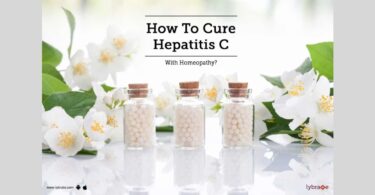There is nothing in the field of medicine or surgery that the family physician has to deal with that will bring him more glory and honor than the successful management of obstetrical cases. He is defending the life and health of the mothers, and whatever touches the hearts of the mothers of our country touches the hearts of every human being.
I have sometimes felt that too many of the abnormal conditions found in the lying-in chamber are deemed impossible to relieve, or else relegated to manual or surgical treatment, when the whole trouble could easily be remedied by the administration of the properly selected homoeopathic remedy.
In the first stage of labor the old time idea of allowing time, and a nervous, timid primapara to work out the problem alone, has been exploded. If there are no deformities of the mother or child, or malpositions, much can be done to shorten and modify labor in every stage, by the use of the simillimum. Who has not seen that rigid undilating os soften like magic after the administration of Belladonna or Gelsemium? In this stage you will often find the pains poorly borne by a nervous, tearful woman. She grows despondent and knows she will not survive her labor, often audibly regretting the day of her marriage. All this can be changed in a few minutes by the use of such remedies as Coffea cruda, Chamomilla, or Pulsatilla, which, in their effects, are like the pouring of oil on troubled waters. The pains will lose their spasmodic character, and harmonious muscular action becomes established.
In the second stage, when the os uteri is fully dilated and the foetal head has entered the superior strait, there may be a cessation of pains. It may not be an indication for forceps, but for medicine, Gelsemium, Secale, or Caulophyllum may re-establish the pains, and in so doing reinforce the whole female economy.
If there is a neurotic history in the family, signs of convulsions may be looked for and should be met with Stramonium. Cuprum arsenicosum, Cuprum metallicnm, Hyoscyamus, Cicuta and others.
It may occur to some to ask, — How long shall we wait for the medicine to act in these conditions? My experience has been that the proper remedy will act immediately, and, if no action is noticed in a few minutes after its administration, another remedy should be selected, which will shorten labor and make it less painful.
We now come to the third stage, and it is here we find the broadest field for the exhibition of our remedies. The mother just delivered realizes one of the happiest moments of her life. After the pangs of labor have suddenly ceased, her entire system is relaxed and exhausted. The placenta may be adherent or retained. If this is so, Pulsatilla, Caulophyllum, Cantharis or Sabina, will greatly aid you in its delivery. Haemorrhages are apt to occur at this stage, which often tax the courage and skill of the physician to the utmost. They become terrific and terrifying, but a stout heart and a clear understanding of the remedy, with a resolute dependence on the simillimum, will carry the patient safely through the most alarming experiences of her life. Fluid extract of Ergot is not to be compared with the action of such remedies as Ipecac, China, Sabina, Trillium and Secale in potencies. These, of course, must be combined with manual treatment in the way of friction over the uterus, hot water and douches, and elevation of the foot of the bed.
Shock and exhaustion can be met temporarily with alcoholic stimulants, but do not depend on them long or you will lose your case. Reaction can better be established by giving China, Carbo veg., Arsenicum alb., Chininum Arsenicosum, etc.
After pains, instead of being lulled by the use of Morphia, or Antikamnia, or some other hypnotic, which nearly always leave a train of stupefying symptoms, can be controlled by Gelsemium, Caulophyllum, Actaea racemosa, Belladonna, Arnica, Viburnum, Morphia aceticum.
For Septic Infection, Arsenicum, Baptisia, Echinacea, Pyrogen, Lachesis, and Arnica, will usually start the case toward recovery, which can be safely carried onward to good health by the properly selected remedy.
After attending a woman through a normal, healthy labor, where no special remedy is indicated, I always prescribe Arnica. After labor the tissues are always left more or less bruised and sore. Arnica will relieve that soreness and produce an early repair of the tissues and rest of the patient.
In presenting this subject I have said nothing, or very little, about surgical aid or pathological conditions, but wish only to impress on you the wealth of that great storehouse of remedies that can be used to render labor shorter and less painful, if we will only use them instead of delaying, and then, on the spur of the moment, use more radical and questionable methods, which often bring failure and disastrous results.
From: Transactions of the Homoeopathic Medical Society of the State of Pennsylvania –Harrisburg PA –September 1908.






Thanks for bringing to light this interesting work. I am a midwife who uses homeopathy extensively in particular during labour. There are so many cases that I know would have been sectioned had it not been for the agency of homeopathy. Homeopathy is the midwife’s helper